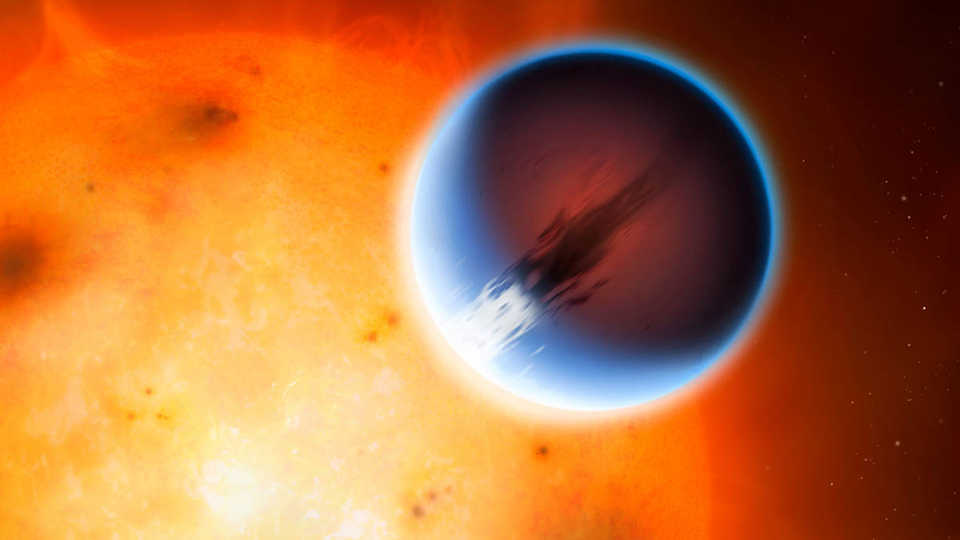Benjamin Dean Astronomy Lectures
Unlocking the Atmospheres of Extrasolar Worlds

HD 189733 b, an extrasolar planet approximately 64.5 light-years away, has winds of 5,400 miles per hour!
Unlocking the Atmospheres of Extrasolar Worlds
Monday, March 2, 7:30 p.m.
Morrison Planetarium
Featuring Dr. Tiffany Kataria, Jet Propulsion Laboratory
Extrasolar planets now number in the thousands, spanning a wide range of orbital and physical properties. Unlocking the atmospheric properties of these exotic worlds using facilities such as the Spitzer Space Telescope and Hubble Space Telescope have enabled us to probe chemistry, radiation, and weather regimes beyond our own solar system. This talk will describe key observations to understand the atmospheres of extrasolar planets with comparisons to three-dimensional models, and how these models inform comparative exoplanet studies using current and future ground- and space-based telescopes, including the James Webb Space Telescope.
About Tiffany Kataria

Tiffany Kataria studies the atmospheric dynamics of exoplanetary and planetary atmospheres. She uses weather models, like the ones we use to predict short-term weather and long-term climate on Earth, to understand the weather processes on these exotic worlds. In particular, she is most interested in how these models can be used to directly inform and interpret observations of exoplanet atmospheres collected from the ground and from space.
A native Long Islander, she is a longtime Yankees fan.
From outer space to Earth's inner core, explore the universe from Morrison Planetarium's 75-foot digital dome.
